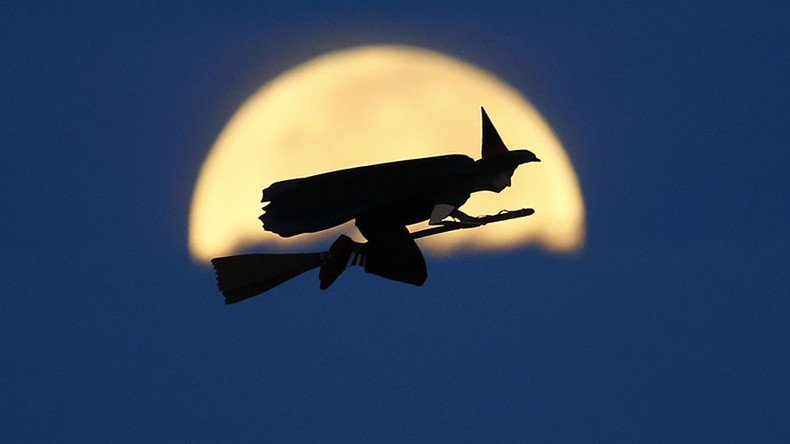Spooky ‘witch marks’ carved into walls across England to be recorded

A British government agency wants people to record sightings of witches’ marks this Halloween to show how the etchings on buildings, intended to ward off supernatural forces, were once “a common part of everyday life.”
The government heritage agency Historic England wants Brits to note the strange round carvings often found outside medieval churches, houses and barns.
Happy Halloween! Will you help us hunt for witches’ marks? https://t.co/Pym3siXFOdpic.twitter.com/vL0p64lPWu
— Historic England (@HistoricEngland) October 31, 2016
The ritual markings were originally perceived as protection against witchcraft and supernatural forces. Examples can be found in the Tower of London and the house where William Shakespeare was born.
As there has never been a full record of all the witches’ marks, also known as apotropaic marks, Historic England is calling on the public to share pictures and further information of sightings across the country.
"Witches’ marks are a physical reminder of how our ancestors saw the world," said Historic England Chief Executive Duncan Wilson.
English Heritage launches public Halloween hunt for ritual Witches’ marks https://t.co/ihbz1fcJwM#halloween#theht#witchpic.twitter.com/bcbRxDXGzU
— The Heritage Trust (@heritagetrusts) October 31, 2016
Little more is known about the process of carving the marks on walls, but Wilson believes that recording them would "really fire the imagination and can teach us about previously-held beliefs and common rituals."
The marks, which are thought to date from 1550 to 1750, often took the form of the ‘daisy wheel’ – a flower-like drawing made with a compass, hoped to distract or trick evil spirits.
Other shapes included pentagons and ‘Solomon’s knots’, as well as letters like AM for Ave Maria, which were meant to guarantee the protection of the Virgin Mary.
Examples of the marks have been seen in Warwickshire, near a cellar door where beer was once kept, and in Bradford-on-Avon’s Tithe Barn, thought to have been placed there to protect the crops. Numerous carvings are also seen at Witches’ Chimney cave in Wookey Hole, Somerset.
"They were such a common part of everyday life that they were unremarkable and because they are easy to overlook, the recorded evidence we hold about where they appear and what form they take is thin," added Wilson.
"Ritual marks were cut, scratched or carved into our ancestors’ homes and churches in the hope of making the world a safer, less hostile place.
"We now need the public’s help to create a fuller record of them and better understand them."












